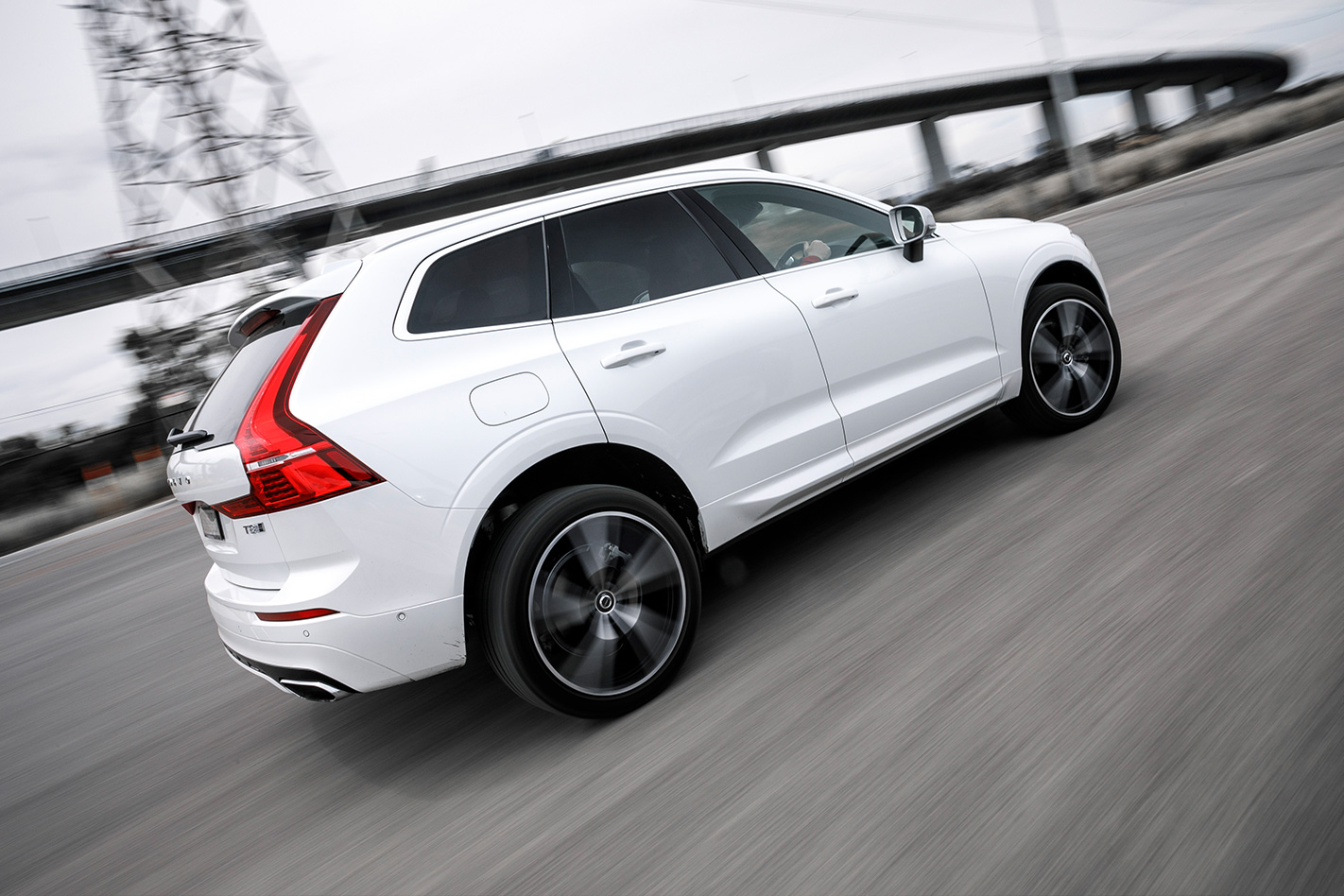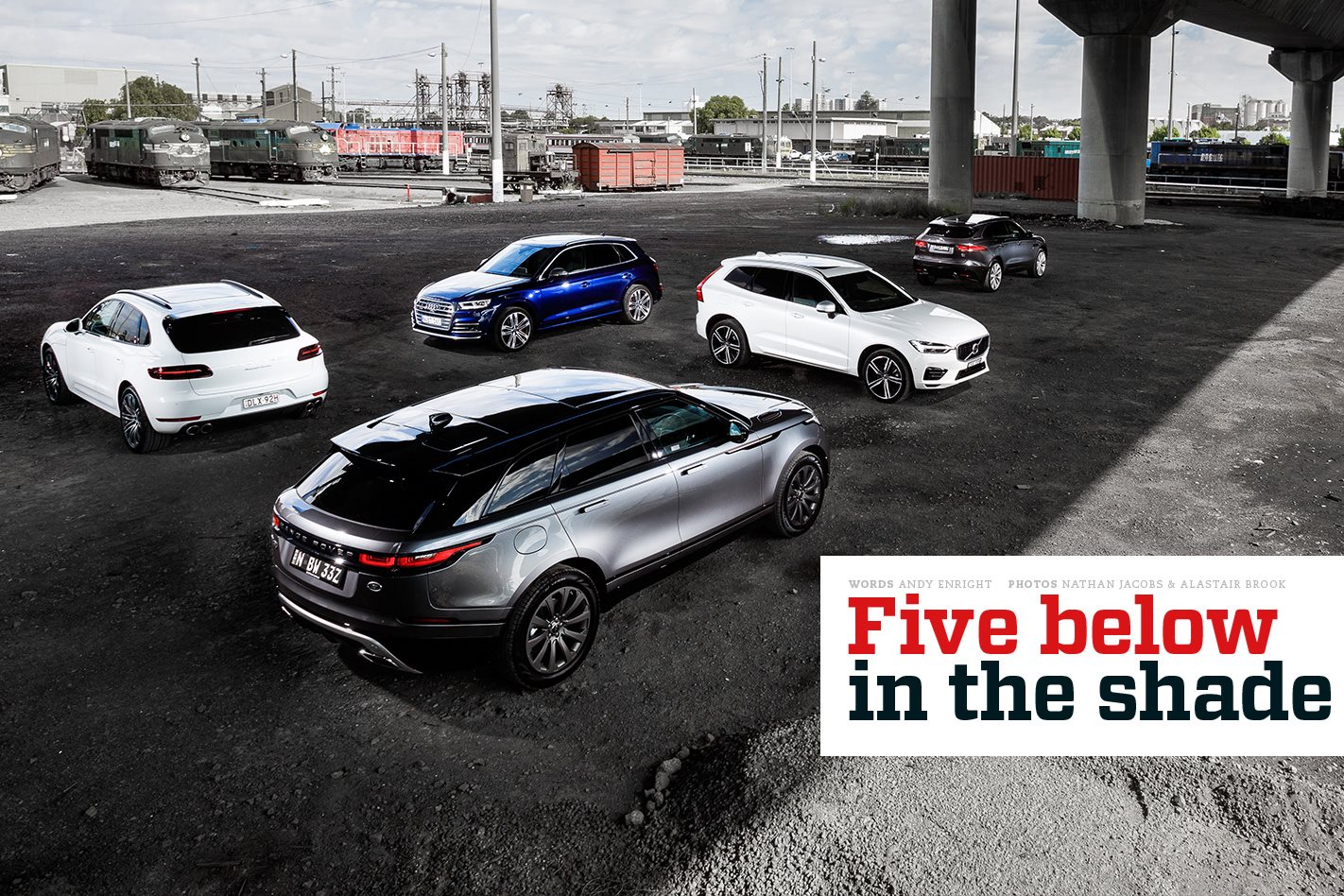COMPARISONS are odious. Whoever coined that phrase many years ago probably didn’t have five of the finest performance SUVs available and a deserted road to play on. Then they’re anything but.
Fun, however, wasn’t always on the agenda with fast four-wheel drives. As a marker of how rapidly this sub-genre has progressed, it’s not too long ago that such vehicles were all firepower and no finesse. Yet it’s hard to argue against the fact that the current crop of contenders has more bandwidth than any other vehicle class.They’re the decathletes of the automotive world, their ascendancy coming from virtually nowhere.
The idea behind this match-up was formed when whittling down the long list for Wheels Car of the Year. We had to have the Range Rover Velar at COTY. Volvo’s all-new XC60 was also a given. The Audi SQ5 shone during testing but ended up taking the fall for the shortcomings of its less talented Q5 siblings. That was the core trio. For this test, Porsche’s Macan Turbo represented the class dynamic benchmark (in lieu of the unavailable Macan GTS) and Jaguar’s F-Pace S – based on the Velar’s underpinnings – looked as though it could have a winning blend of talents.
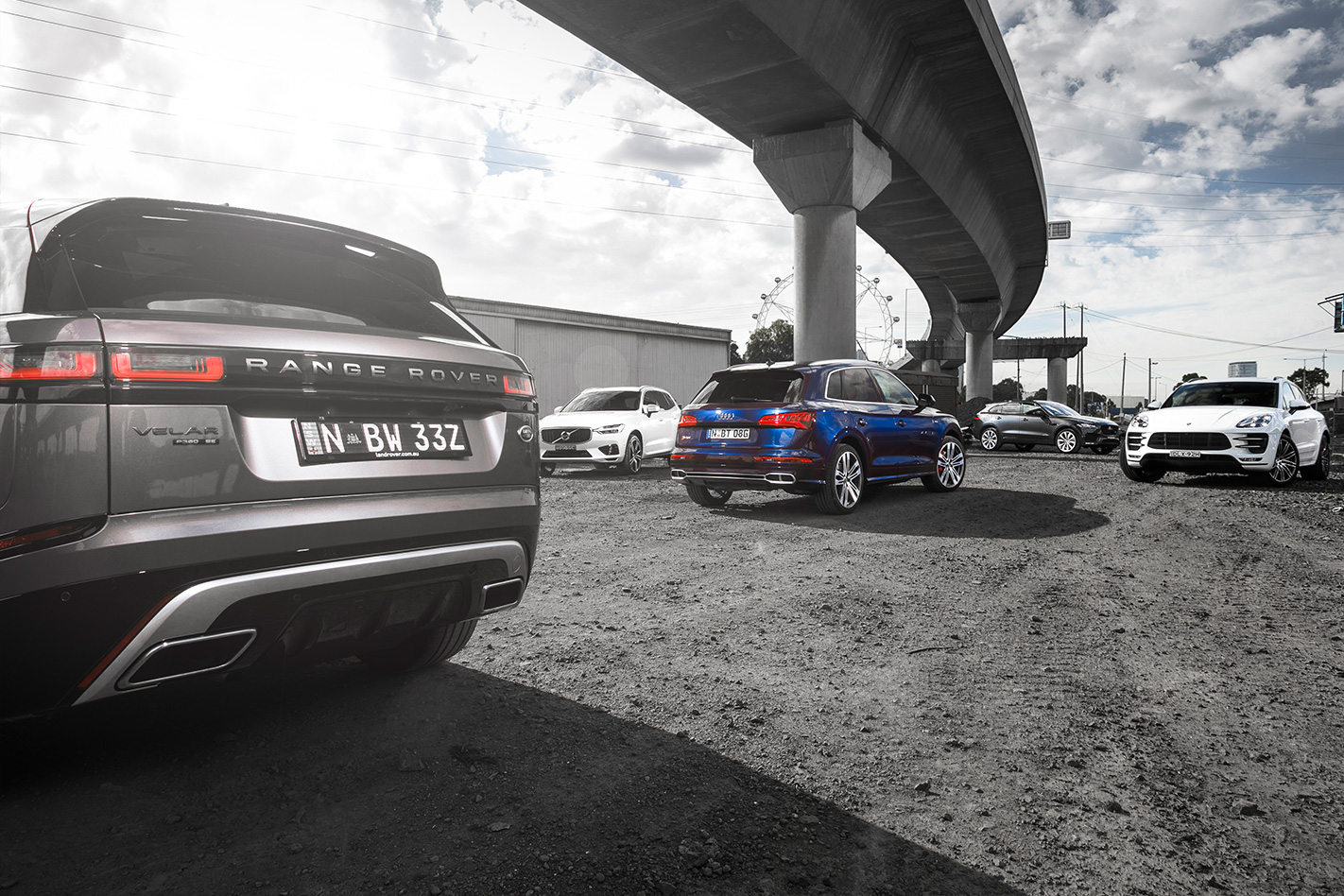
Eight minutes and fifteen seconds. That’s what you won’t get near in a Porsche Macan Turbo. Back in 2014 Porsche’s baby SUV became quicker than a Cayman S.
Actually, the car we have here would go even quicker around the hallowed/hackneyed (take your pick) loop of German blacktop as it’s the Macan Turbo Performance Package. This raises power by 30kW to 324kW, while torque from the 3.6-litre twin-turbocharged V6 engine steps up by 50Nm to 600Nm. A hefty $10K more than the standard Macan Turbo, the range-topper gets a switchable sports exhaust, a Sport Chrono pack with launch control, a 15mm-lower ride height, bigger brakes and a few cursory licks of carbonfibre under the bonnet. There will be temptingly tickable boxes on the configurator too, and this car adds 21-inch 911 Turbo design wheels and a host of nice-to-haves, bumping the price from $143,500 naked up to a hefty $158,900.
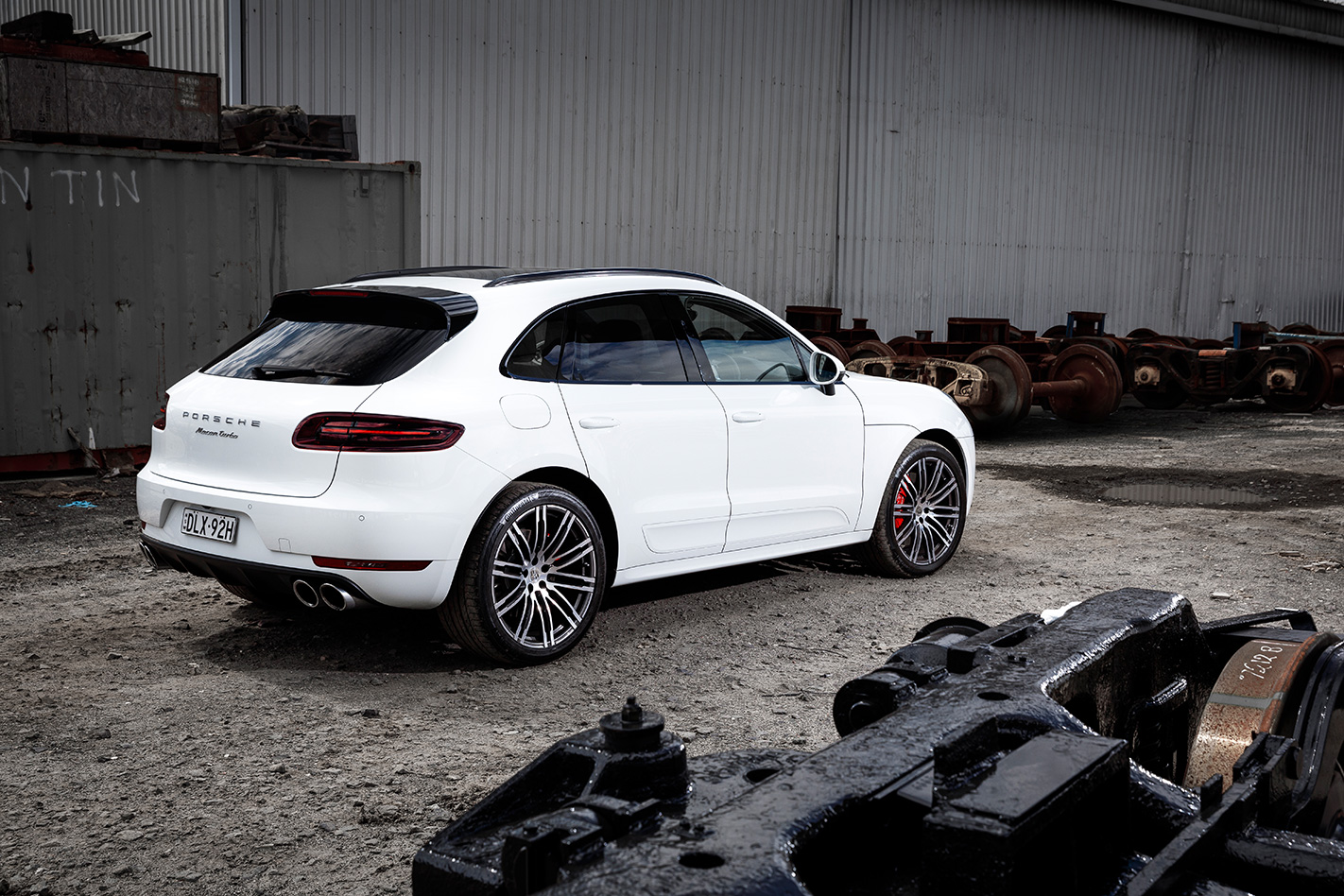
The Velar also comes fitted with Pirelli Scorpion Verde mud and snow tyres. Coupled with a whole host of smart off-road tech, it’s undoubtedly the most capable of this quintet where the bitumen runs out. But would you? Look at the thing. It’s supermodel slinky with 20-inch satin-chrome alloys, leather and suedecloth upholstery, plus ‘Ebony Morzine’ headlining. We don’t even know what that is, but it’s a fair shout that beating bulldust out of it would be wholly abhorrent. At $119,462 list and $130,902 as-tested, does the Velar’s largely superfluous off-road skillset compromise it in this company?
There’s no such quandary for the Audi SQ5. Now packing a 3.0-litre twin-turbocharged petrol V6 rather than the old oiler of the same configuration, the flagship Q5 is unapologetically road biased. It also emerged as the dark horse at the outset of this test, its $99,611 list and 260kW/500Nm output combination only being slightly tempered by the addition of a few options. The quattro sport differential is a no-brainer at $2950 if you want the best from an SQ5, while it’s hard to see too many prospective buyers turning down the $5600 Technik Package, which comprises matrix LED headlights, 755W Bang & Olufsen audio and a colour head-up display. In total, the as-tested weighed in at a not unreasonable – in this rarefied air at least – $111,507.
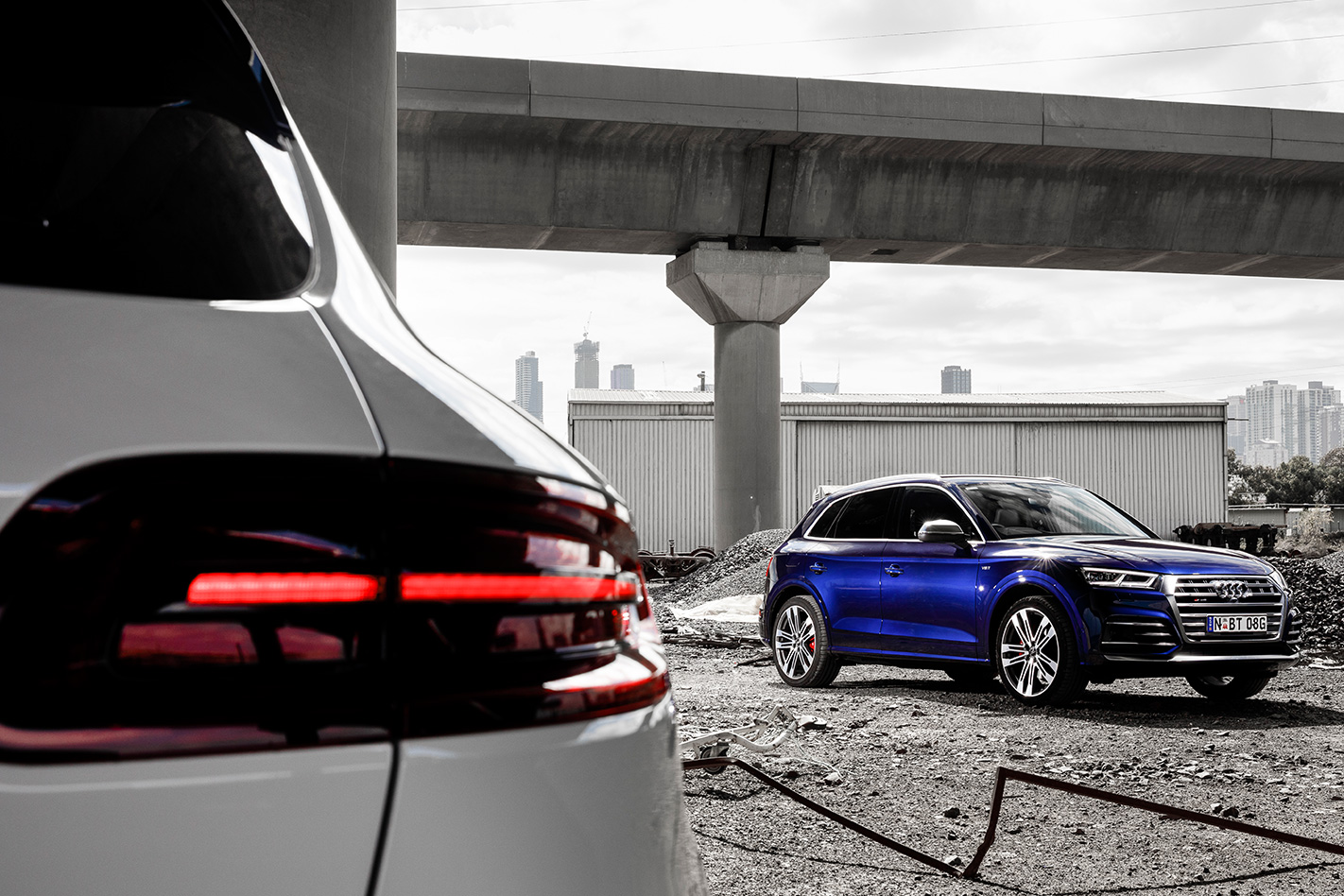
IF YOU were so inclined, you could divide this test into a lazy kind of rubric. The XC60 and the Velar are the new and the complex; entities that take time to figure out. The Macan and the SQ5 wear their hearts on their sleeves; you know what you’re going to get from these Volkswagen Group distant cousins. Then there’s the F-Pace. Despite sharing so much with the Velar, it feels utterly different; an outlier in this gathering. This two-year old vehicle almost feels old-school. Opinions were divided over how successfully it inveigles an SUV’s design language into Jaguar’s portfolio. Some felt the shape generic, while others claimed that this low-key approach is exactly the way to blood a conservative clientele without driving them to the debauchery of a 6pm dessert wine.
If the aesthetic execution of the F-Pace is low key, the same can’t be said for its manners. While modern turbo engines can suffer from a loss of character and flintiness, wind the Jag past 5000rpm and it develops a complex timbre. The exhaust sound you feel in the pit of your guts, overlaid with breathy induction and the shrill keening of the supercharger. And it’s loud, all laced with testosterone and top notes of hot oil tang.
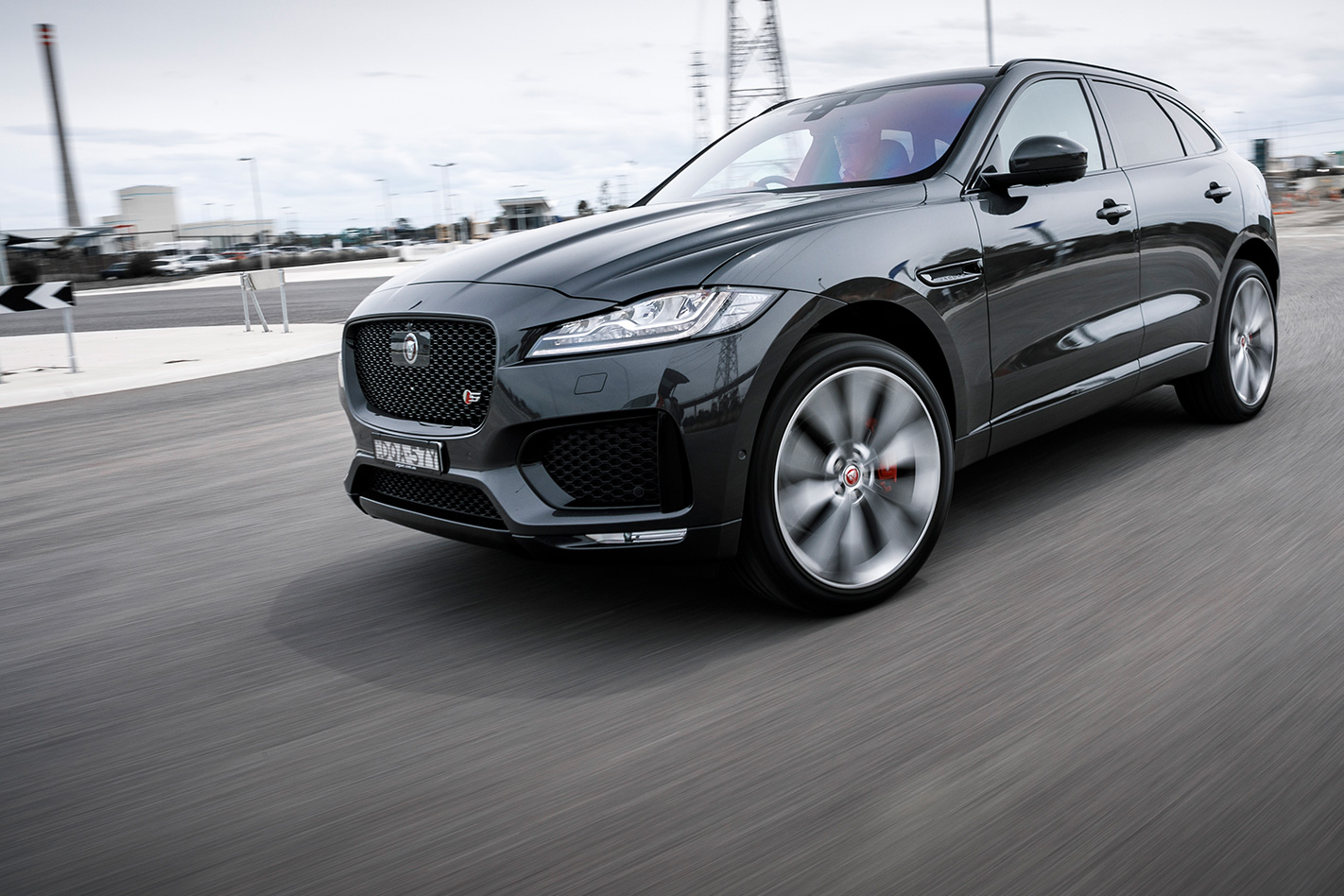
It has no business riding as well as it does on steel springs and 22-inch Straight Outta Compton-spec alloys, the F-Pace extracting full value from the length of its damper stroke. The brakes aren’t quite so clever, being the first to tire during a spirited fang through a series of downhill hairpins. The simple three-spoke wheel feels great in your hands and the calibration of the eight-speed automatic is the best of the bunch.
By contrast, the Velar sometimes feels a handful. Much of that has to do with its tyres, which have little chance of keeping pace with SUVs shod with P Zeros and ContiSportContact 5Ps. The slouching treadblocks of the 20-inch Pirelli Scorpion Verdes make the front feel a little mute through corners, and the heftier sidewall hysteresis never feels fully compatible with the Velar’s air suspension, becoming overly jarring in Dynamic. Keeping the suspension in Comfort and switching the transmission to Sport seems the most acceptable compromise on Australian roads. The ZF 8HP70 is a wonderful transmission, but the fine tuning of this installation never feels quite as finessed as the Jaguar’s.
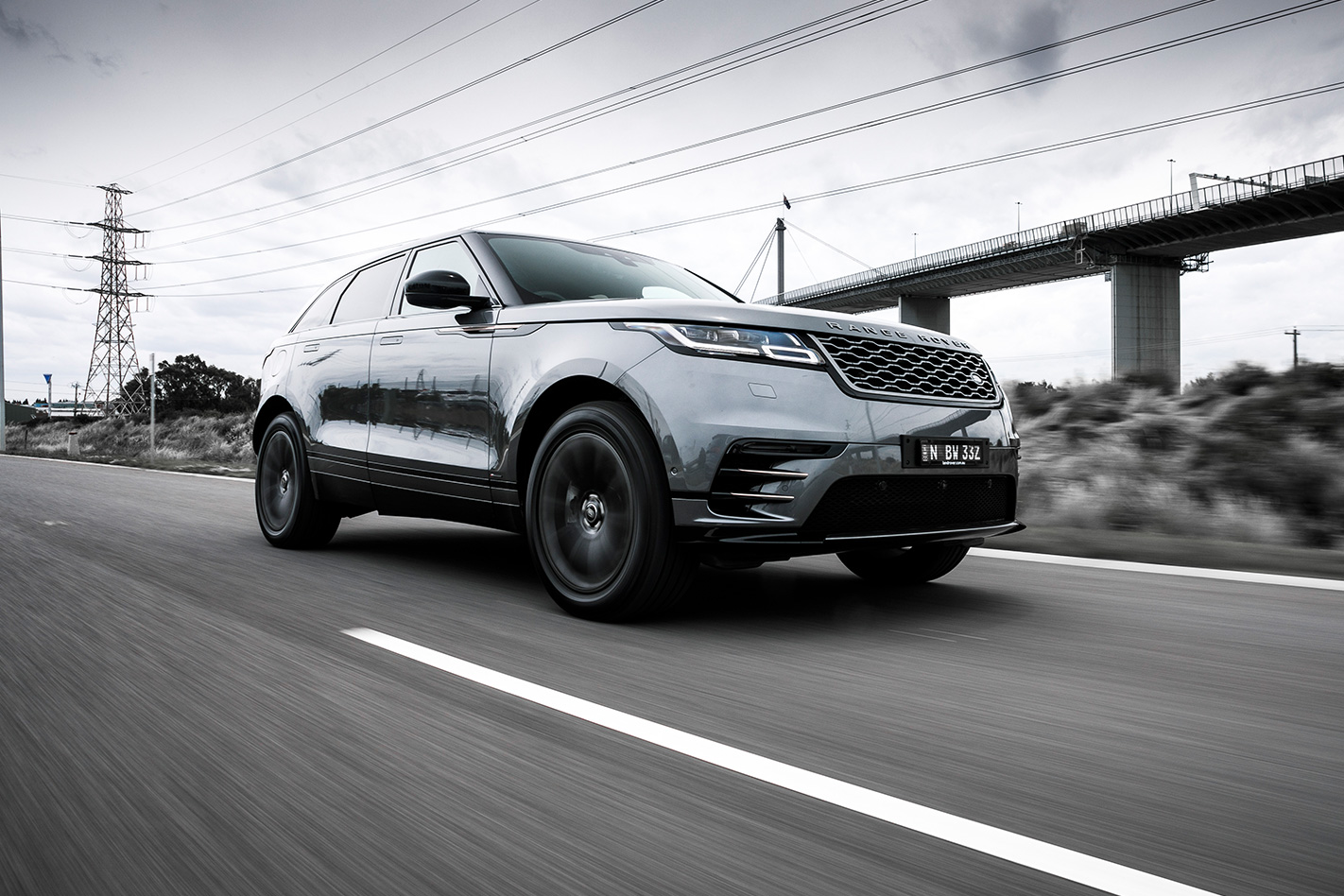
The Volvo has so many personalities that it’s hard to pin down its true nature. It can be a pure EV, for a modest 40km at least; it can team electric motor and petrol engine for rip-snorting urge; it can noodle around like an oversized Prius in town, surfing lazily on hybrid power; and, when the battery depletes fully – as it will – it can feel like a Volvo XC60 T6 with a few bags of cement in the footwells. You can set the engine to charge the batteries or hold charge until later. One thing you can’t do – and we did try – was to set the car up in rear-drive-only electric mode with the stability control switched off. No dice. It might be hugely clever, but it’s still a Volvo.
It does have a fun side though. Set into maximum attack mode, it’s a hoot. Deploying 640Nm of torque almost instantaneously out of corners gives the XC60 T8 the sort of punch that only the Macan can approach, and it streaks lengths clear of any of the others on any road that’s determinedly point-and-squirty. Its weight means that it’s never quite as agile as the best of this crop on a series of bends that demand more subtlety, and that hefty kerb weight means that you’ll need to manage your front tyres if they’re not to wilt under heavy demand. The regenerative braking needs a sensitive foot and, if you’re really determined to fling the car into a bend, you’ll find a very slickly calibrated ESC and the only car in this group with a hint of body flex. Steering is accurate without being overly garrulous.
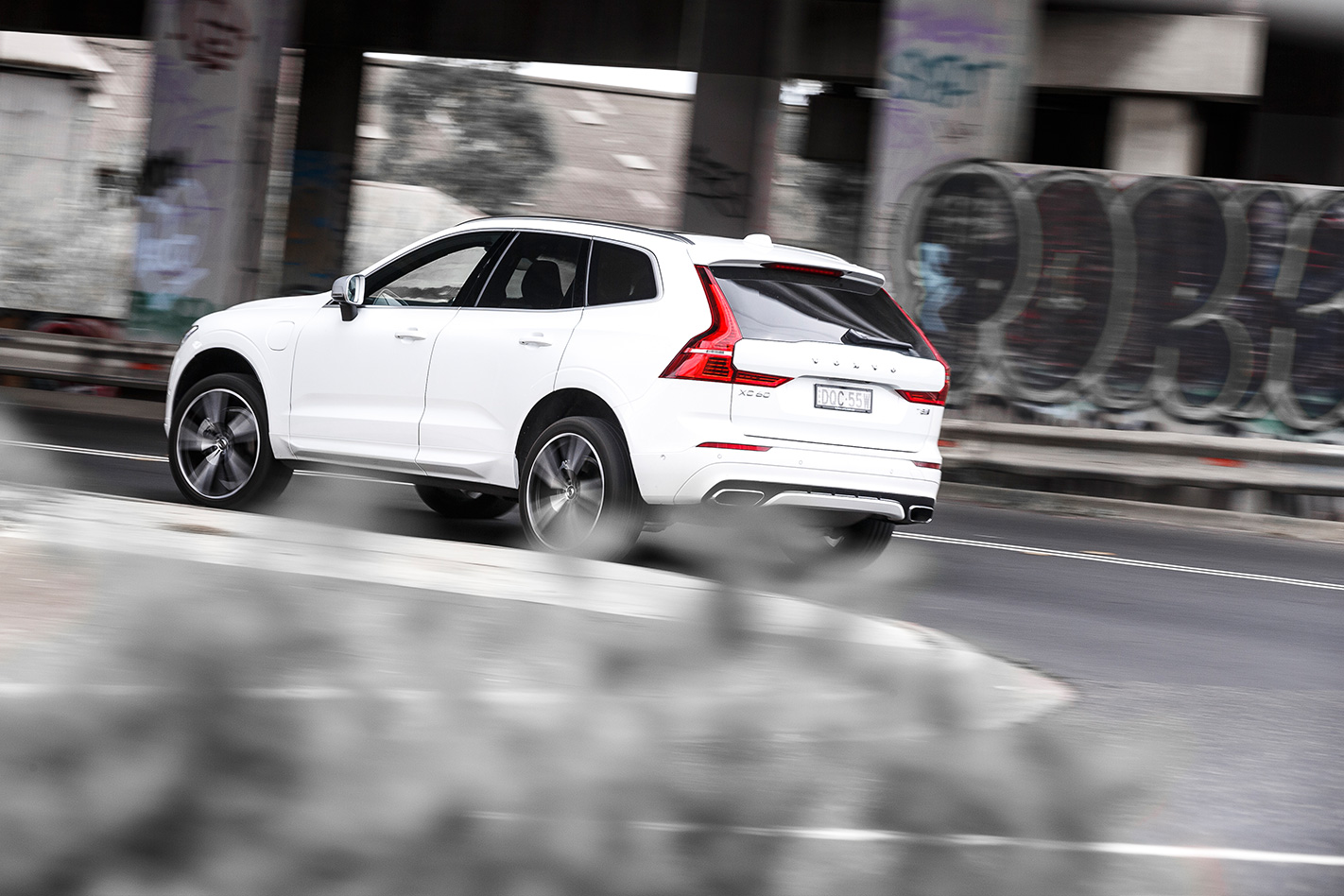
If the Volvo has its idiosyncrasies, the Audi SQ5 displays little in the way of quirkiness. It clinically dissects any road you care to choose. We knew that already. What we didn’t appreciate was that with the quattro sport diff fitted, the SQ5 is even more throttle-adjustable than the Macan. Okay, so you’re never going to be mistaken for Ken Block taking the scenic route back from the school run, but provoke the Audi and you can create the subjective impression of yaw. With the narrowest tyres of the lot, the SQ5 can be induced to have a shimmy when the ESC is switched into its more relaxed Sport mode. The engine feels unburstable, if slightly two-dimensional, and the brakes mighty, though the ride always seems a bit too angsty to settle. It doesn’t require much in the way of remedial action by the driver, though. The SQ5 just grips, goes.
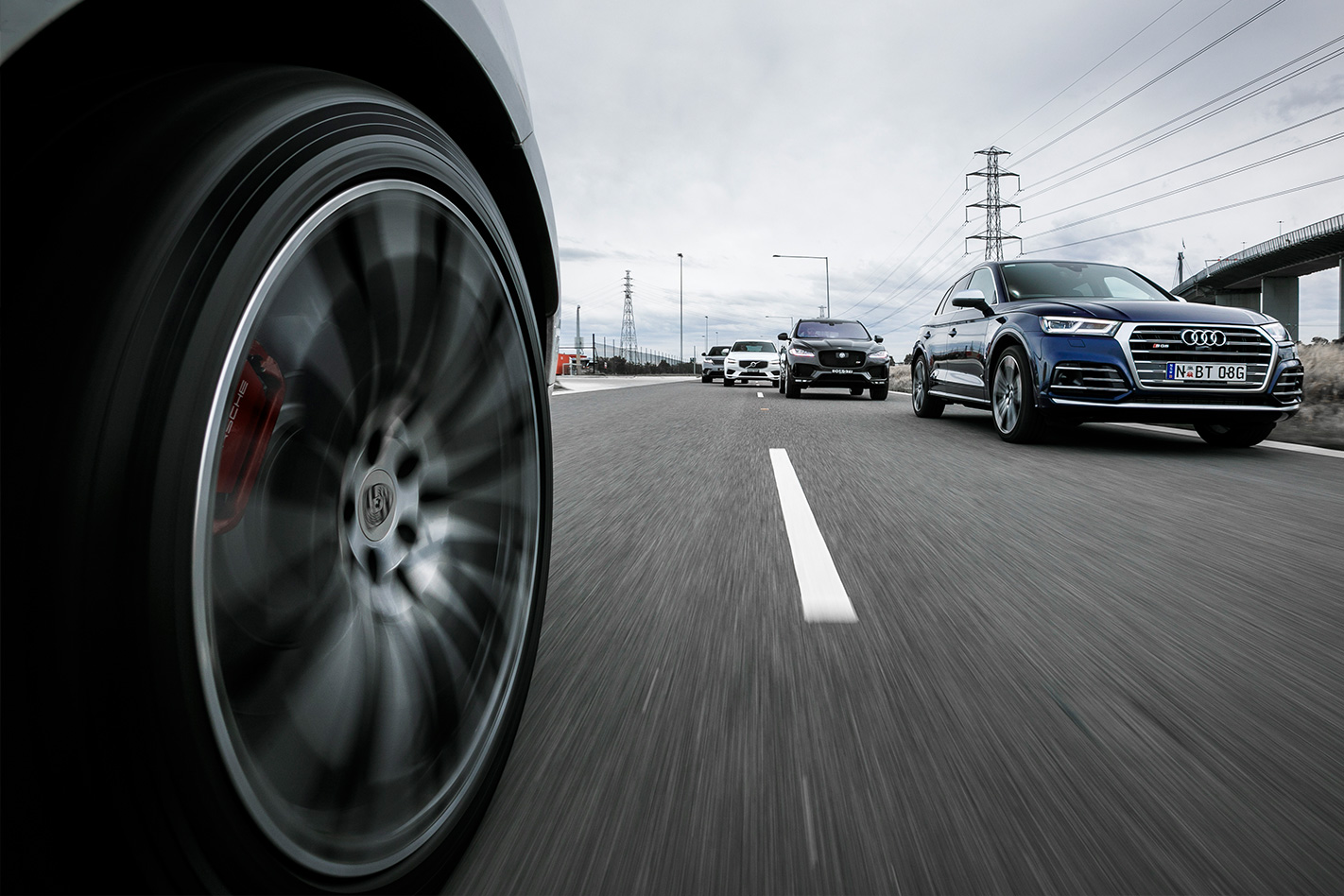
It goes from top of the class to flat last in terms of interior ambience though. Leaving aside the fact that this is the oldest and most anonymous shape here, the cabin feels cramped and dated. From the driver’s seat we stopped counting at 90 buttons, rear legroom is easily the worst, and while the infotainment system is laudably easy to operate, it’s limited in scope and features compared to every other car here. When price is weighed into the equation, the flagship Macan (as opposed to the better-value GTS) becomes a hard proposition to justify.
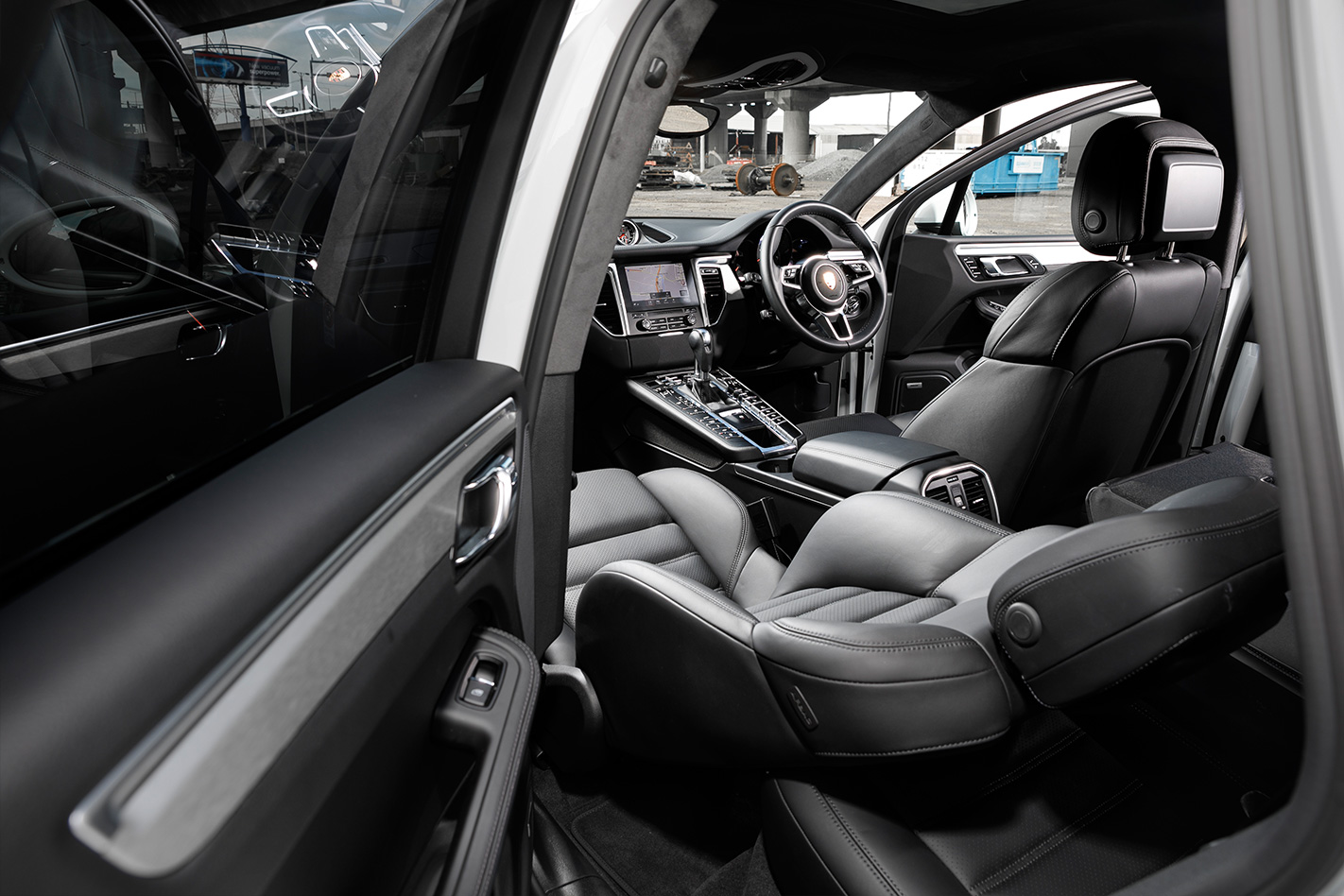
The Jaguar is a tougher call in that regard. To make the interior feel in any way special, you need to throw thousands of dollars’ worth of options at it, which condemns it in this company. There are elements of style over substance inside, like the gimmicky and occasionally obstructive rotary gear shifter. There are also some clunky ergonomics such as the tiny driving mode switches, which are almost as bad as Audi’s drive select buttons which clearly haven’t been converted for right-hand drive. But the F-Pace wins a lot of credit for the way it drives, offering a lovely facsimile of old-school analogue whilst retaining low-key digital smarts. And therein lies its appeal. It’s a great choice if you want modern convenience but don’t actually like modern cars, which probably encompasses a greater slice of the motoring spectrum than many car manufacturers would care to countenance.
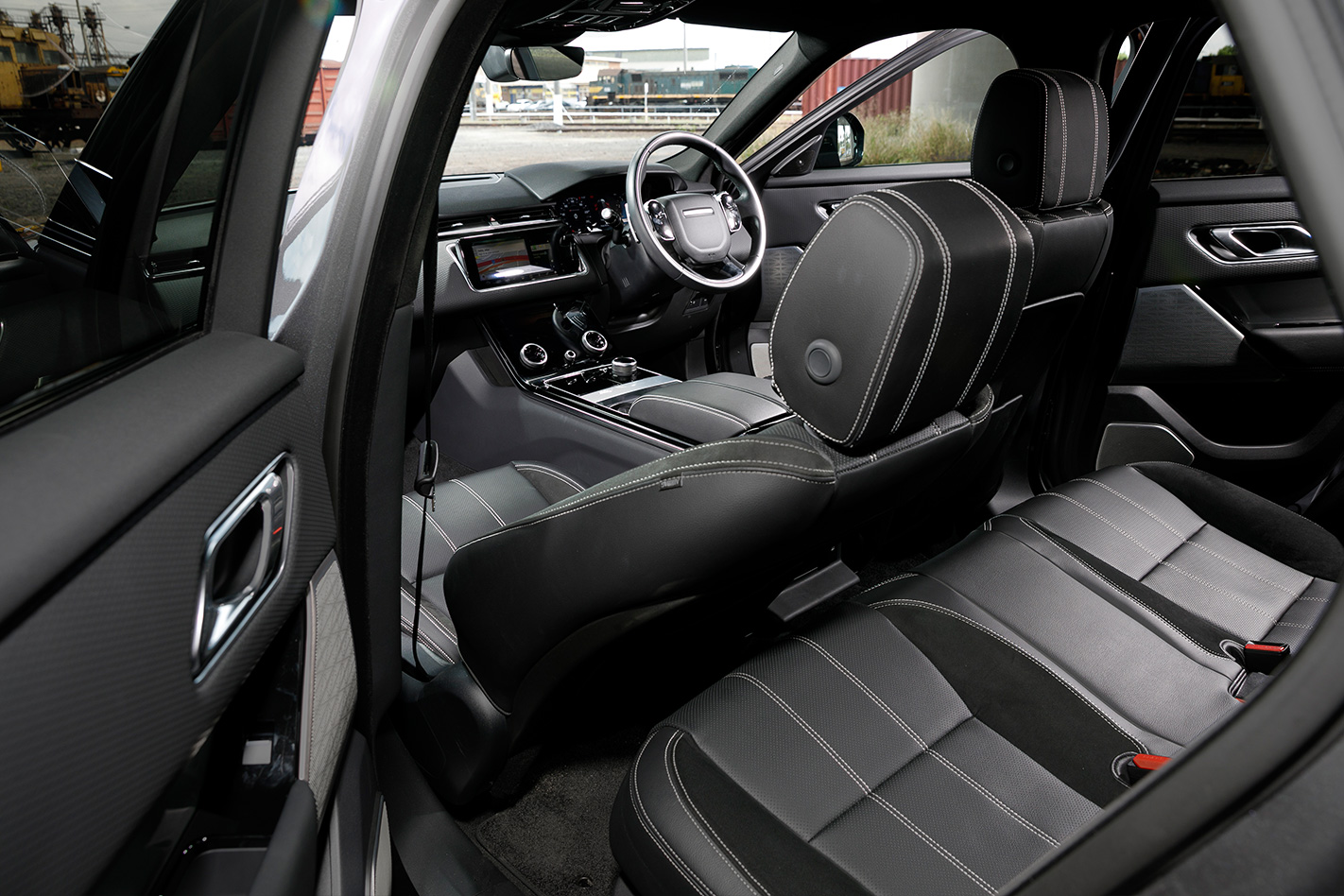
Well, almost all of the others. The Volvo XC60 T8 – the entrant we thought might struggle here – has its own ace card in the form of its hybrid powertrain that can combine tailpipe-emission-free city driving with an addictively overclocked torque response when required. Factor in the most practical cabin with the best rear accommodation, the cleanest interior execution, by far the best seats, the best economy, lowest emissions, the most generous standard equipment list, and manifestly the least obnoxious image of our set of otherwise anti-social social climbers and it’s a surprisingly clear-cut win for the XC60.
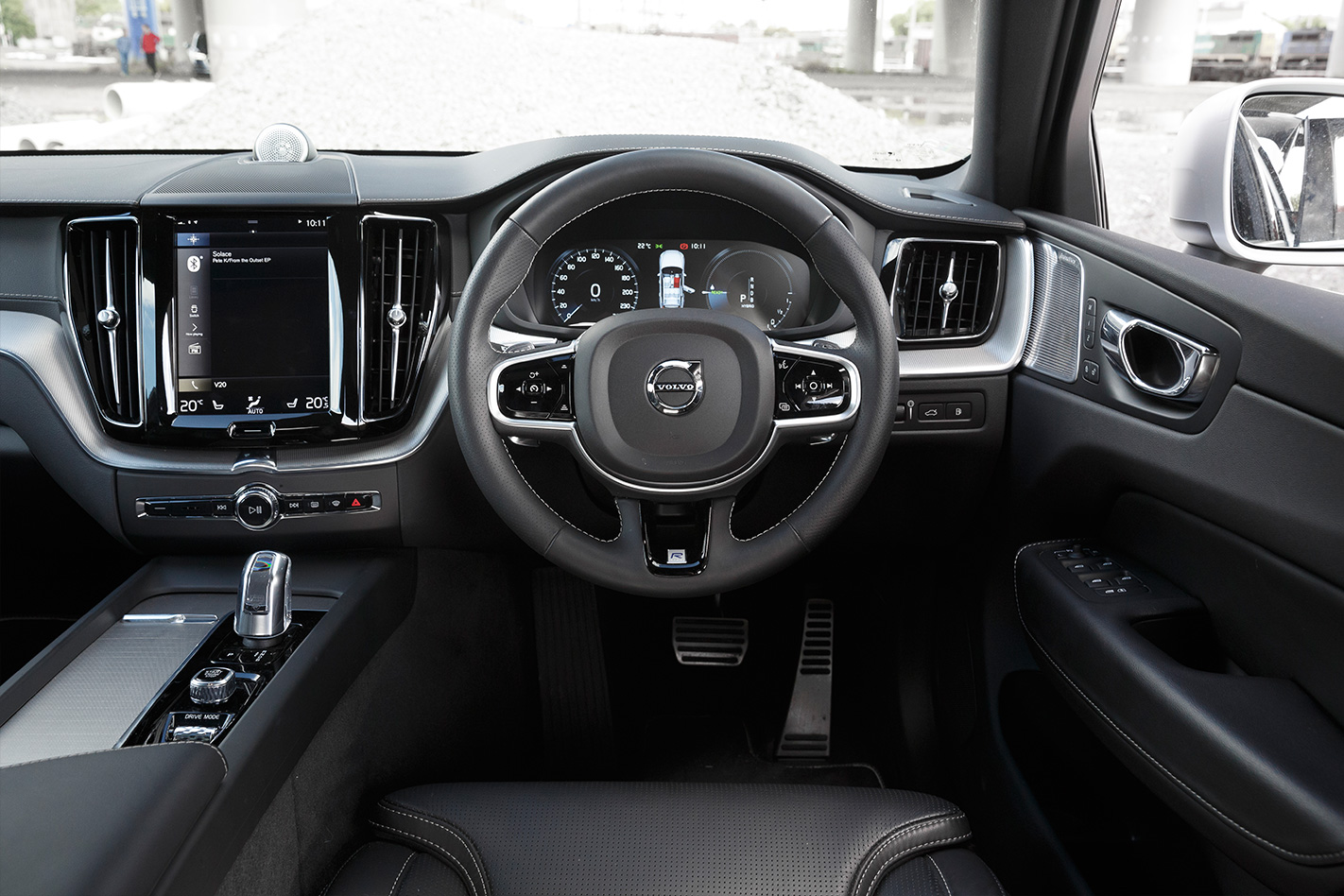
So much for being outside your comfort zone. Perhaps Volvo ought to do it more often.
